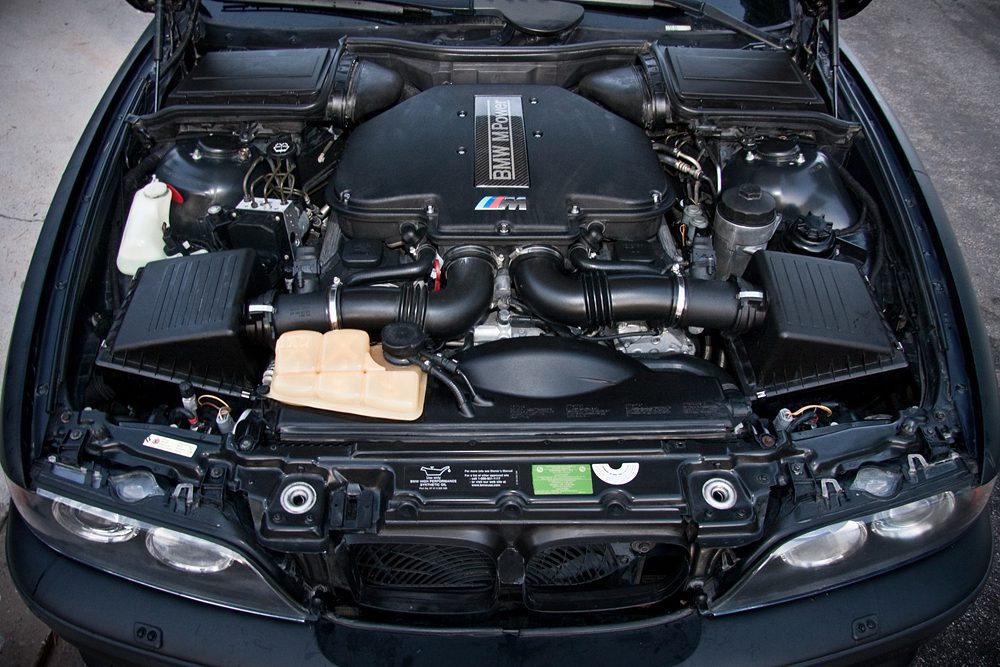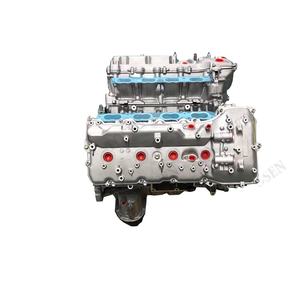Import Engines: Quality and Efficiency You Can Trust
Import Engines: Quality and Efficiency You Can Trust
Blog Article
Exploring the Most Current Technical Innovations in Import Engines and How They Boost Driving Experience
In the realm of automotive engineering, the landscape of import engines is undertaking a profound makeover driven by innovative technological advancements. From the evolution of turbocharged engines to the combination of hybrid innovation, the current improvements are revolutionizing the driving experience in ways previously unbelievable. As import producers press the boundaries of performance and effectiveness with boosted fuel shot systems and sophisticated engine administration remedies, the question develops: Just how do these developments really impact the way we communicate with our cars on the roadway?

Evolution of Turbocharged Engines
In the automotive sector, the advancement of turbocharged engines has actually dramatically transformed the landscape of efficiency and performance. Turbocharging, once mostly seen in high-performance sporting activities automobiles, has currently come to be a mainstream modern technology taken on by a vast array of lorries, from portable hatchbacks to luxury cars. The basic principle behind a turbocharged engine is simple yet reliable - forcibly more air into the burning chamber, it permits even more fuel to be burned, leading to raised power output.
One of the essential benefits of turbocharged engines is their capacity to supply even more power from smaller sized, more fuel-efficient engines. This scaling down fad has actually caused a decrease in emissions without compromising performance, making turbocharging an attractive option for car manufacturers aiming to fulfill rigorous environmental regulations. Turbocharged engines provide enhanced torque at lower RPMs, offering chauffeurs with a more responsive and dynamic driving experience.
As technology remains to advancement, we can expect additional advancements in turbocharging, causing even greater levels of efficiency and performance in the vehicle market.
Developments in Gas Injection Equipments
Modern gas injection systems have progressed to supply gas more effectively and exactly right into the engine cyndrical tubes, improving general engine efficiency and fuel performance. One of the essential innovations in fuel shot systems is the shift from typical port fuel shot (PFI) to even more sophisticated straight gas injection (DFI) modern technology.
Moreover, the integration of digital control units (ECUs) and sensing units in gas injection systems has enabled for real-time modifications to sustain shipment based on numerous variables such as engine lots, temperature level, and driving problems. In addition, improvements in fuel injector layout, products, and spray patterns have contributed to cleaner combustion and smoother engine procedure.
Assimilation of Hybrid Technology
The advancement of fuel shot systems in the direction of higher efficiency and efficiency has established the stage for the seamless integration of crossbreed modern technology right into modern engines. Hybrid technology incorporates making use of conventional inner combustion engines with electrical propulsion systems, using enhanced fuel performance and lowered discharges. By integrating electrical motors and batteries right into the powertrain, hybrid engines can supplement the inner combustion engine throughout velocity or low-speed driving, thus enhancing total efficiency.

Improved Engine Management Equipment
What are the key innovations in engine administration systems that are enhancing the efficiency and efficiency of modern engines? Engine administration systems have undertaken substantial advancements to maximize engine performance and performance.
Additionally, modern-day engine management systems make use of innovative formulas and expert system to analyze the information collected by sensing units and make vibrant adjustments to factors such as ignition timing, gas injection, and turbocharger increase stress. This level of accuracy and adaptability cause improved engine responsiveness, increased power output, and minimized fuel intake.
In addition, engine monitoring systems currently feature advanced diagnostic capabilities that can detect and resolve concerns such as misfires, sensing unit breakdowns, and gas system irregularities in real-time, therefore boosting general engine dependability and longevity. These advancements in engine monitoring systems play a critical duty in improving the driving experience by delivering optimum efficiency, fuel efficiency, and dependability.
Influence of Lightweight Materials
Integrating light-weight products in engine production has actually revolutionized the automobile market's method to improving fuel performance and efficiency. Using materials such as carbon titanium, light weight aluminum, and fiber has actually dramatically lowered the total weight of engines, leading to improved power-to-weight proportions and boosted gas economic climate. These light-weight materials supply a higher strength-to-weight proportion contrasted to traditional products like steel, permitting higher resilience without jeopardizing performance.
One of the crucial advantages of utilizing lightweight products in engine building is the decrease of inertia, resulting in quicker engine response times and enhanced total lorry dexterity. Furthermore, the lighter weight adds to lower power intake, making vehicles a lot more environmentally friendly by lowering emissions.
Moreover, the application of lightweight products visit in engine elements such as pistons, connecting rods, and crankshafts has allowed engineers to push the limits of performance without giving up integrity (import engines). This development has led the way for extra powerful and efficient engines that deliver a premium driving experience while satisfying stringent emissions standards
Conclusion
Finally, the current technical developments in import engines have actually substantially improved the driving experience. From the evolution of turbocharged engines to improvements in fuel shot systems, combination of hybrid modern technology, improved engine administration systems, and the use of light-weight materials, these technologies have collectively enhanced performance, gas efficiency, and general driving dynamics. As modern technology continues to development, we can anticipate much more amazing developments in the future of import engines.
Modern gas shot systems have actually progressed to provide fuel more efficiently and specifically into the engine cylinders, enhancing general engine efficiency and fuel efficiency - import engines. By incorporating electrical motors and batteries right into the powertrain, crossbreed engines can supplement the interior combustion engine throughout look at more info velocity or discover this low-speed driving, thus enhancing total performance
What are the essential advancements in engine monitoring systems that are improving the efficiency and efficiency of modern engines? Engine administration systems have actually undertaken substantial developments to optimize engine efficiency and effectiveness. From the advancement of turbocharged engines to developments in gas shot systems, integration of hybrid innovation, improved engine management systems, and the use of lightweight materials, these advancements have actually jointly improved performance, gas performance, and overall driving dynamics.
Report this page